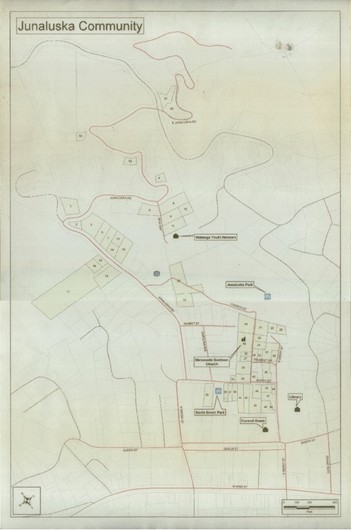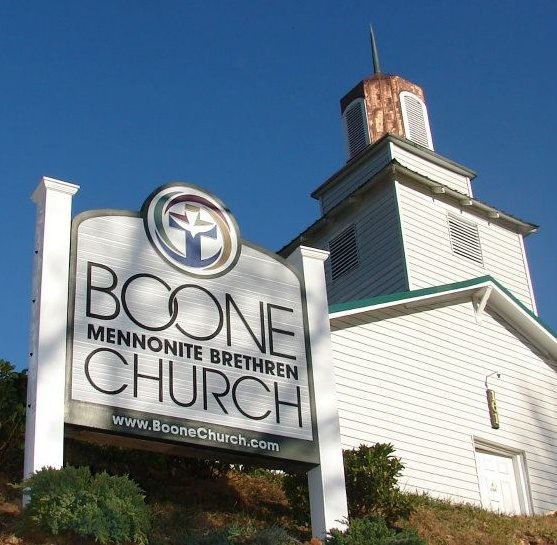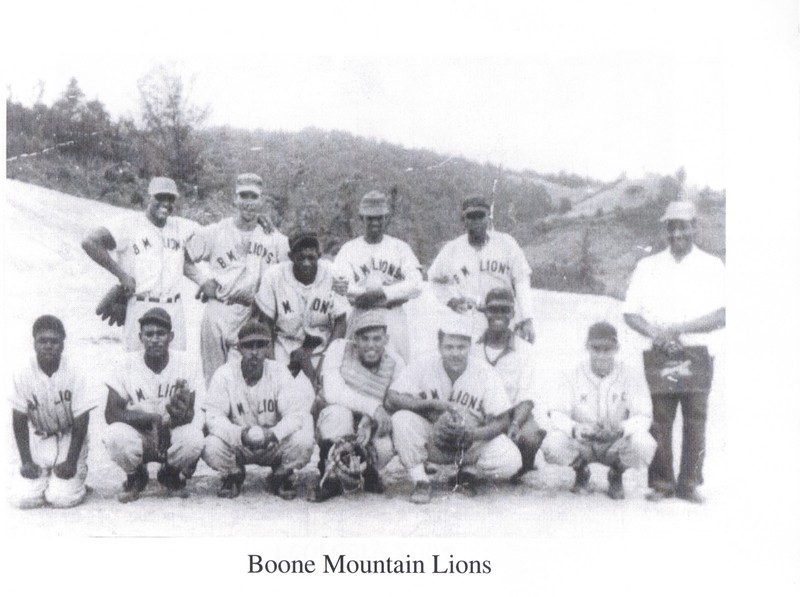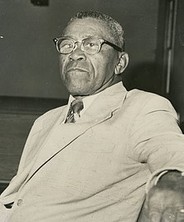Boone Mennonite Brethren Church
Introduction
Text-to-speech Audio
Images
A property map that shows plots of land that belong to the Junaluska Community

The Boone Mennonite Church today

The Boone Mountain Lions was the local baseball team for Junaluska that played against other teams and participated in competitions.

Rev. Ronda David Horton, Minister of Boone Mennonite Brethren Church from 1935 to 1986.

Backstory and Context
Text-to-speech Audio
The African American neighborhood in Boone originated in the 1850s from land sharecropped and purchased by former slaves of Jordan Council, the largest slave owner in Watauga County. By 1900, there were around thirty African American families living on the slopes above the town. People on “The Hill,” as the community was known for much of the 20th century, were mostly day laborers or sharecroppers. They lived in modest houses and tiny shacks tucked along the rugged mountain path that led up the slope of Howard’s Knob. The only farm of any size was the farm of Troy Councill, a Black farmer who had a “30 or 40 Acres farm” in the community. The African American Methodist Church, built in 1898, was the only place of worship serving the small community.
In the late 1800s, Mennonite missionaries from New England settled in Elk Park, NC intent of following the Bible’s call to “do for the least of these”. Elk Park is about twenty five miles southwest of Boone in Avery County, NC. In 1894, they established the Salem School and Orphanage in Elk Park, which educated African American children.
In 1911, the Mennonites expanded their outreach efforts into parts of Watauga counties including working with the small African American community in Boone. The Boone Mennonite Brethren Church was completed in 1918. Surrounding the church is one of the oldest African American Communities in Western North Carolina, now referred to as the Junaluska neighborhood. Eventually, the Mennonites would establish six traditionally African American congregations that would later be known as The North Carolina District Conference of the Mennonite Brethren Church.
In 1895, Ronda David Horton was born on “The Hill.” By the time Horton was a small boy, the Elk Park Mennonites had expanded their ministries into the region. They did not yet have a church, but they would meet in people’s houses or at the African American Methodist Church, which was the only church in the Junaluska neighborhood at the time. Although Horton was not an orphan, he attended the Salem School in Elk Park and lived at the Orphanage for part of the year.
In 1935, Horton became an ordained minister in the church. For the next 41 years, he led the church and became the spiritual leader for the entire African American community in Boone. Reverend Ronda Horton conducted his services in a solemn conservative manner that he learned from his Mennonite mentors. He rarely allowed anything more than a piano accompaniment in his services. However, he had a beautiful singing voice and was a member of a men’s chorus which was in much demand in both white and Black events in the region.
In the 1930s, Horton and other clergy in Boone, both white and Black, would gather for “Fellowship Meetings” every fifth Sunday. Horton’s background in the Mennonite tradition of racial equality made him a natural leader for such events. Sadly, the fellowships did not continue into the 1940s and 1950s in Boone.
In 1955, Horton became the leader of the coalition of the six African American Mennonite Brethren Churches that were founded by the Elk Park based Mennonites. He would lead that organization until his death in 1986.
The members of the African American community in Boone lived a quiet and separate existence on “The Hill”. A few blocks from the church on Queen St, the community could socialize at the Chocolate Bar, an African American owned social club and bar. They also had a one chair barber shop, a couple of stores and even a baseball team.
But in most of Boone and at Appalachian State University, African Americans were treated as second class citizens. They weren’t allowed to watch a film at the Appalachian Theater on King Street until a balcony was built. They weren’t able to sit at the counter at Boone Drug for lunch, and their children were sent to a tiny neighborhood school for “Colored” children. The Watauga County Schools did not desegregate until the late 1960s. In 1969, William Roland Neely became the first African American to graduate from Appalachian State University.
In 2011, Appalachian State University, the Boone Mennonite Church leaders and other town leaders came together to create the Junaluska Heritage Association which is dedicated to uncovering and preserving the history of the Junaluska Community.
Sources
"Appalachian Journal 1996-2001 Index." Appalachian Journal 28, no. 4 (2001): 408-519. http://www.jstor.org/stable/40934124.
Frick, Meghan, “The first African Americans at ASU: piecing together a history”, The Appalachian, February 11, 2011. http://www.theappalachianonline.com/old/entertainment/7023-minorities-make-history, Accessed on November 21, 2016.
“History of Junaluska Community”, Junaluska Heritage Association. Accessed October 27,2016. http://junaluskaheritage.org/exhibits/show/history-of-junaluska-community
Keefe, Susan E and Manross, Jodie D., “Race, Religion, and Community: The Demolition of a Black Church”, Mountain Blacks, Spring 1999, p252-263.
Miller, Elizabeth Méaut. "How Firm a Foundation: Denominationalism and Congregational Identity at an African American Mennonite Brethren Church." Master's thesis, University of North Carolina at Chapel Hill, 1997.
"Special Collections at Belk Library." Appalachian State University Historical Timelines. Accessed October 27, 2016. http://collections.library.appstate.edu/timelines/general/1960_1969.
